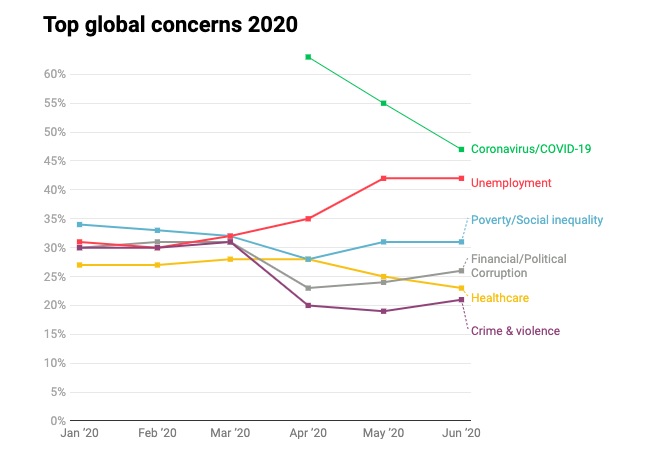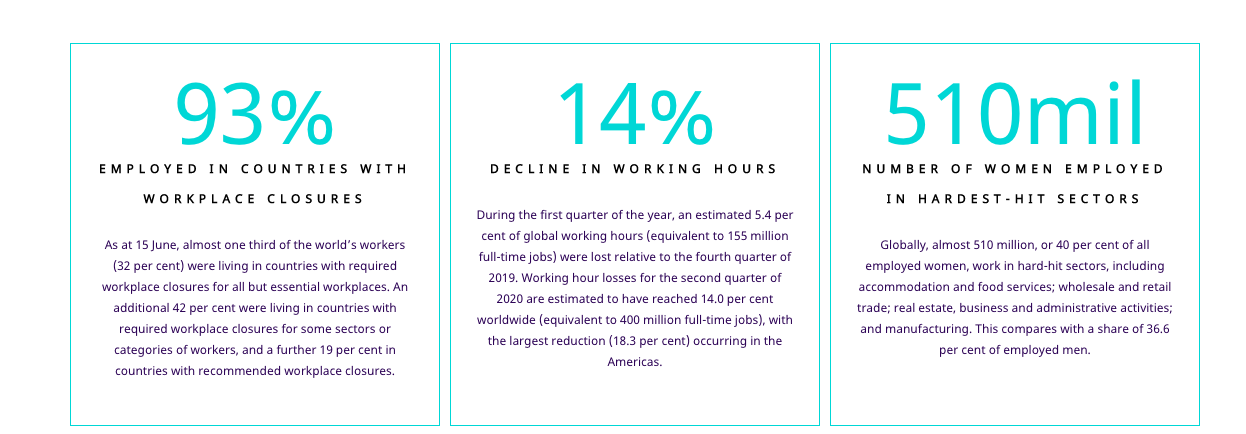Impact of COVID-19 on jobs: Tops charts to check out

We are now sitting at the cusp of the year 2020. The year that actually made sense to what disruption really means and why agility and adaptability will be the key to surviving any disruption.
One of the biggest impacts this crisis brought was on employment across the geographies. According to the recent update by the International Labor Organization (ILO), between April-June 2020, the world lost almost 400 MN full-time jobs due to the pandemic. Almost 59 percent of full-time jobs have been exterminated in the APAC region, while South Asia accounted for 110 million of the total 235 million full-time jobs lost this quarter
We look at some of the charts published by the media and research companies and have selected top charts that give us an overview about the employment trends now and beyond the pandemic world. They aren’t necessarily the most read or widely shared infographics, but each present noteworthy data.
Top global concerns by Ipsos:
Unemployment turns out to be the second biggest concern around the world, as the novel Coronavirus turned out to be the first concern. However, a total of eight countries have now seen Unemployment take the place of COVID-19 as their chief worry since April. France and Israel are the latest two countries to see job losses take over from the coronavirus in first place.

Unemployment data by World Bank
The unemployment caused by the crisis led by the COVID 19 has been the most poignant than any other crisis in history. In fact the unemployment caused by the Global Financial Crisis of 2008 led to an unemployment rate of six percent globally as compared to 7.2 percent of the unemployment rate caused by the coronavirus.

COVID-19 and labour statistics by ILO
The world will emerge from the pandemic with higher levels of unemployment, inequality, poverty, debt and political frustration. This makes it all the more important that, individually and collectively, governments make the ambition of “building back better” – as opposed to building back to where we previously were – a central tenet of their recovery plans.
In this regard, the ILO Centenary Declaration sets out a human-centred agenda for the future of work involving investment in people’s capabilities, the institutions of work, and the sustainable jobs of the future, which provides important reference points for tackling the key challenges that lie ahead.

Digitization capability of jobs: Microsoft Data Science
The economic recovery will take place amid the longer-term and already-unfolding wave of automation based on the new technologies that underpin what some have called the Fourth Industrial Revolution. Over the next five years, we estimate that the global workforce can absorb around 149 million new technology-oriented jobs. Software development accounts for the largest single share of this forecast, but roles in related fields like data analysis, cyber security, and privacy protection are also poised to grow substantially.
The magnitude and mixture of job growth will vary by country, industry, and sector. Although the impact will not be distributed evenly, digital transformation will touch virtually every corner of the global workforce — from food production (324,000 new jobs) to healthcare (Two MN) and the automotive industry (Six MN).















